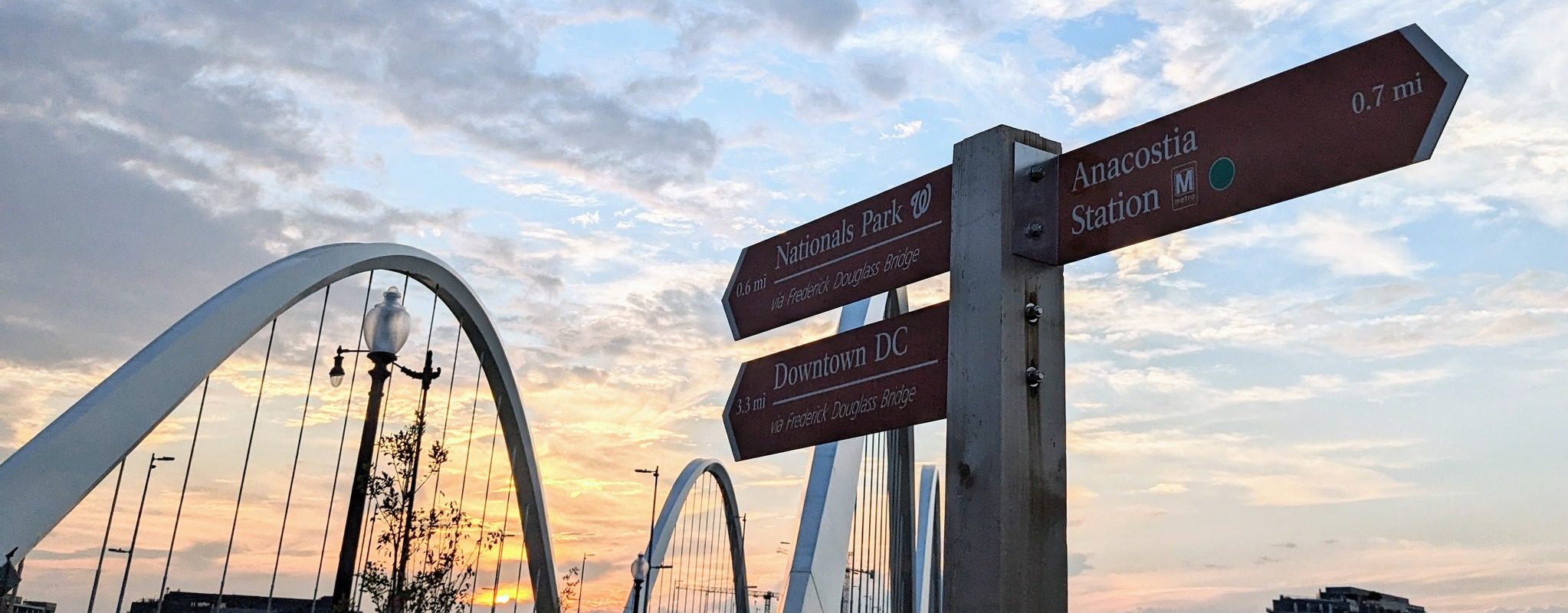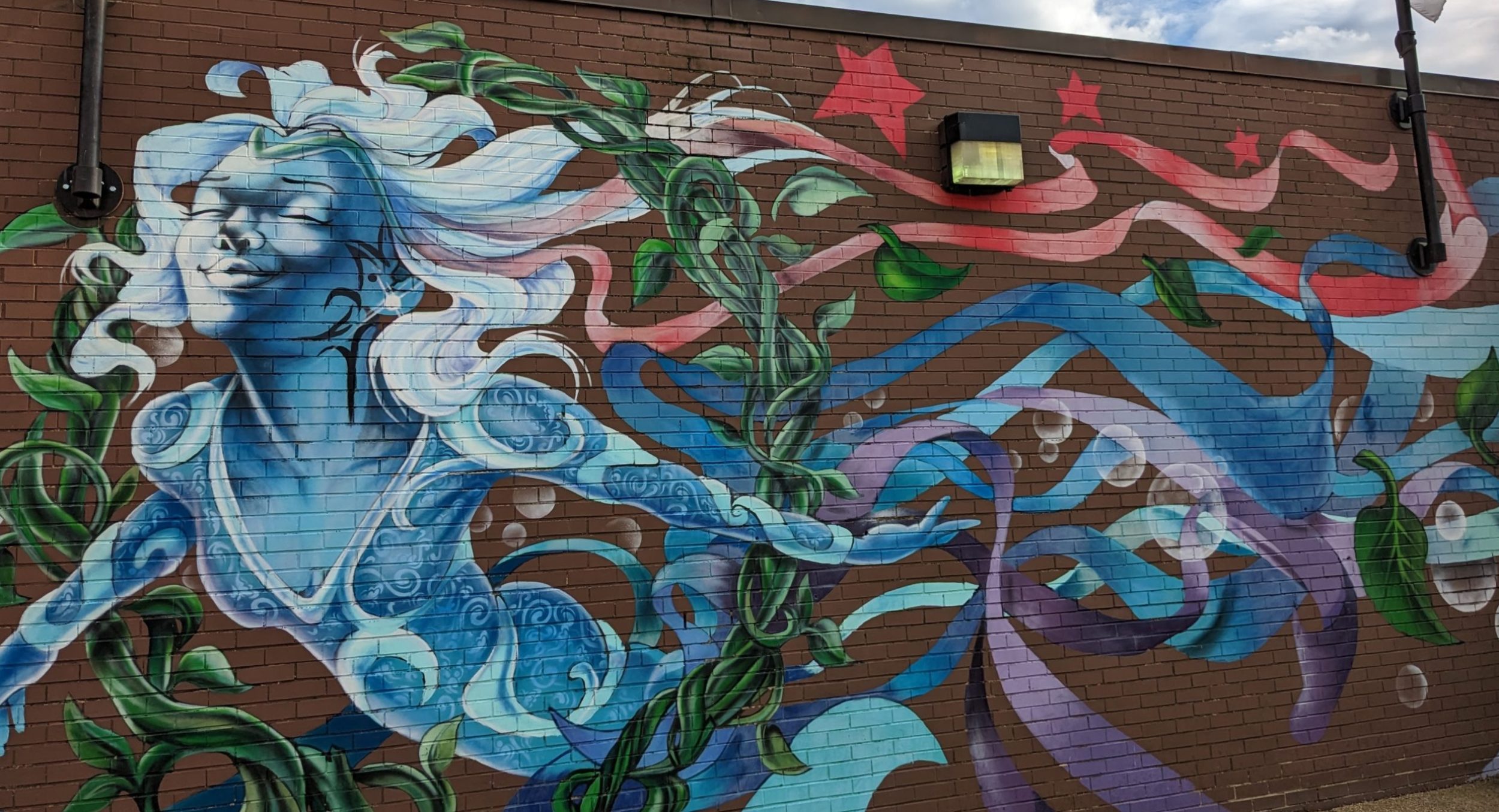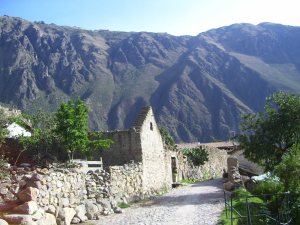
 It’s hard to imagine how much commotion there was just a few blocks from the quiet streets shown in these two pictures. Squadrons of visitors climbed over the temple-and-terrace complex that attracts so many people to Ollantaytambo, an otherwise sleepy town in Peru’s Sacred Valley. Tour buses lined Ollantaytambo’s main square.
It’s hard to imagine how much commotion there was just a few blocks from the quiet streets shown in these two pictures. Squadrons of visitors climbed over the temple-and-terrace complex that attracts so many people to Ollantaytambo, an otherwise sleepy town in Peru’s Sacred Valley. Tour buses lined Ollantaytambo’s main square.
Ollantaytambo is part of what’s now called the Sacred Valley, which was settled for centuries before the Spanish arriv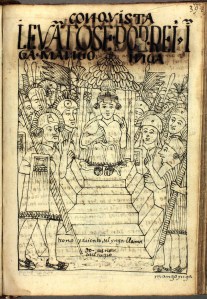 ed in what’s now Peru. Ollantaytambo saw a rare Inca victory over the Spanish in 1536. Manco Inca took the technologies that had made Ollantaytambo a great agricultural center and used them as weapons. (That’s a picture of Manco Inca to the right, taken a 17th century book.) Manco Inca had high terraces, used for crops, to his advantage in fighting his battle. The Incas had long been diverting water to irrigate crops, and Manco Inca applied this know-how when he flooded the plain. After this victory, he fled into the jungle and managed to live another eight years or so. That’s an accomplishment. The Spanish had taken root in Peru in 1532. They killed off the Inca ruler Atahualpa in 1533, and put what they hoped would be a puppet on the throne, only to see smallpox carry him off. A noble of lower rank, Manco Inca persuaded the Spanish to make him the next ruler. His sons include Tupaq Amaru, who would also rebel against the Spanish.
ed in what’s now Peru. Ollantaytambo saw a rare Inca victory over the Spanish in 1536. Manco Inca took the technologies that had made Ollantaytambo a great agricultural center and used them as weapons. (That’s a picture of Manco Inca to the right, taken a 17th century book.) Manco Inca had high terraces, used for crops, to his advantage in fighting his battle. The Incas had long been diverting water to irrigate crops, and Manco Inca applied this know-how when he flooded the plain. After this victory, he fled into the jungle and managed to live another eight years or so. That’s an accomplishment. The Spanish had taken root in Peru in 1532. They killed off the Inca ruler Atahualpa in 1533, and put what they hoped would be a puppet on the throne, only to see smallpox carry him off. A noble of lower rank, Manco Inca persuaded the Spanish to make him the next ruler. His sons include Tupaq Amaru, who would also rebel against the Spanish.
My husband and I were fortunate to have time to stay overnight in Ollantaytambo. David and I headed away from the crowds after we first arrived there on a Sunday afternoon. We walked through a quiet neighborhood on our way to hike up the hill that faces the temple complex. To me, it was like the Andean version of visiting New Orleans. One makes a short visit to Bourbon Street and then sets to wandering the quieter streets of the French Quarter and Garden District, to see all the little wonders.
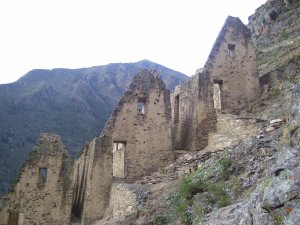
 We hiked up far enough that day to explore these buildings, seen on the left. From there, you had the view shown in the picture on the right, a sweeping tranquil green valley. From our spot on the hill, we could see into the neat little walled gardens all over Ollantaytambo. David and I wondered whether nobles or priests used these as summer homes, and were a little chagrined to find that the buildings were warehouses. The next morning, we set out early for the temple complex, seen in the pictures below, and had it to ourselves for at least an hour
We hiked up far enough that day to explore these buildings, seen on the left. From there, you had the view shown in the picture on the right, a sweeping tranquil green valley. From our spot on the hill, we could see into the neat little walled gardens all over Ollantaytambo. David and I wondered whether nobles or priests used these as summer homes, and were a little chagrined to find that the buildings were warehouses. The next morning, we set out early for the temple complex, seen in the pictures below, and had it to ourselves for at least an hour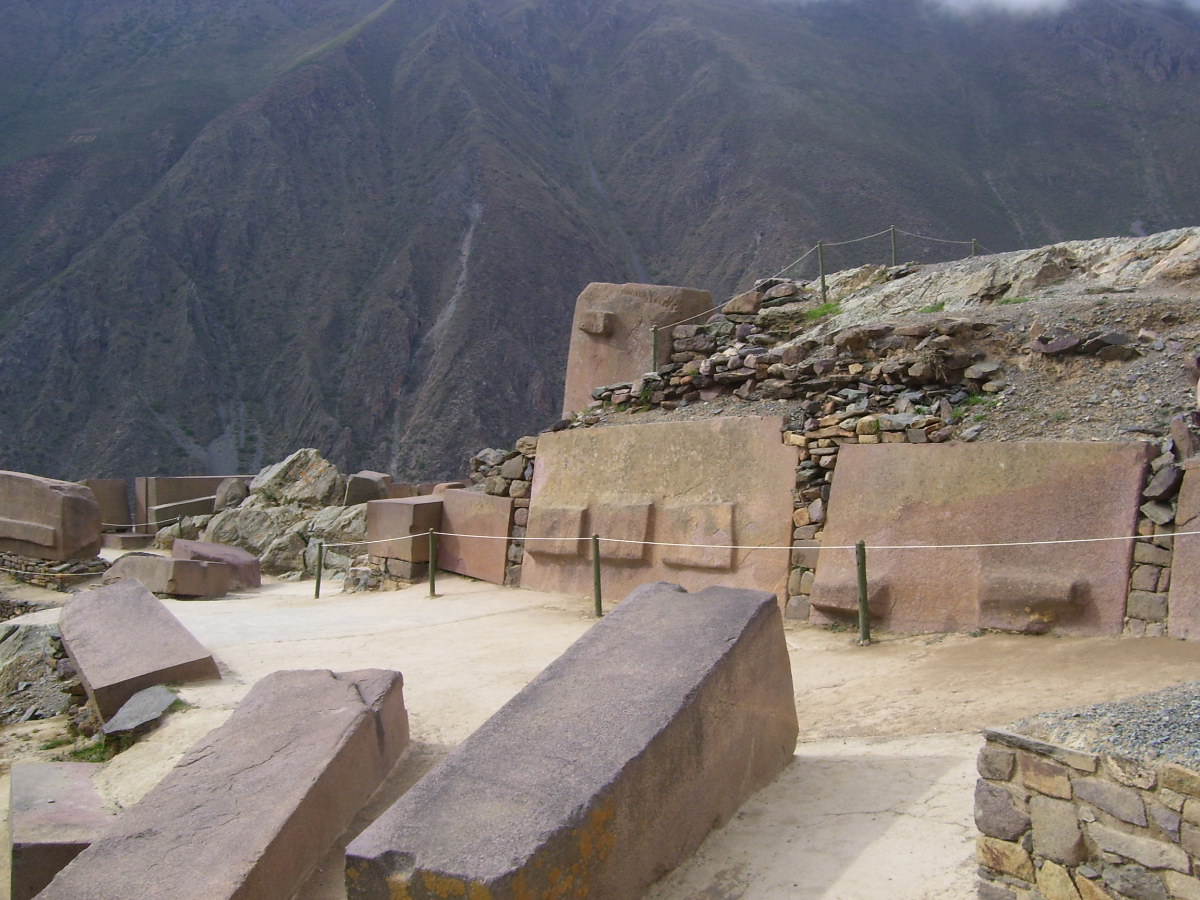 .
.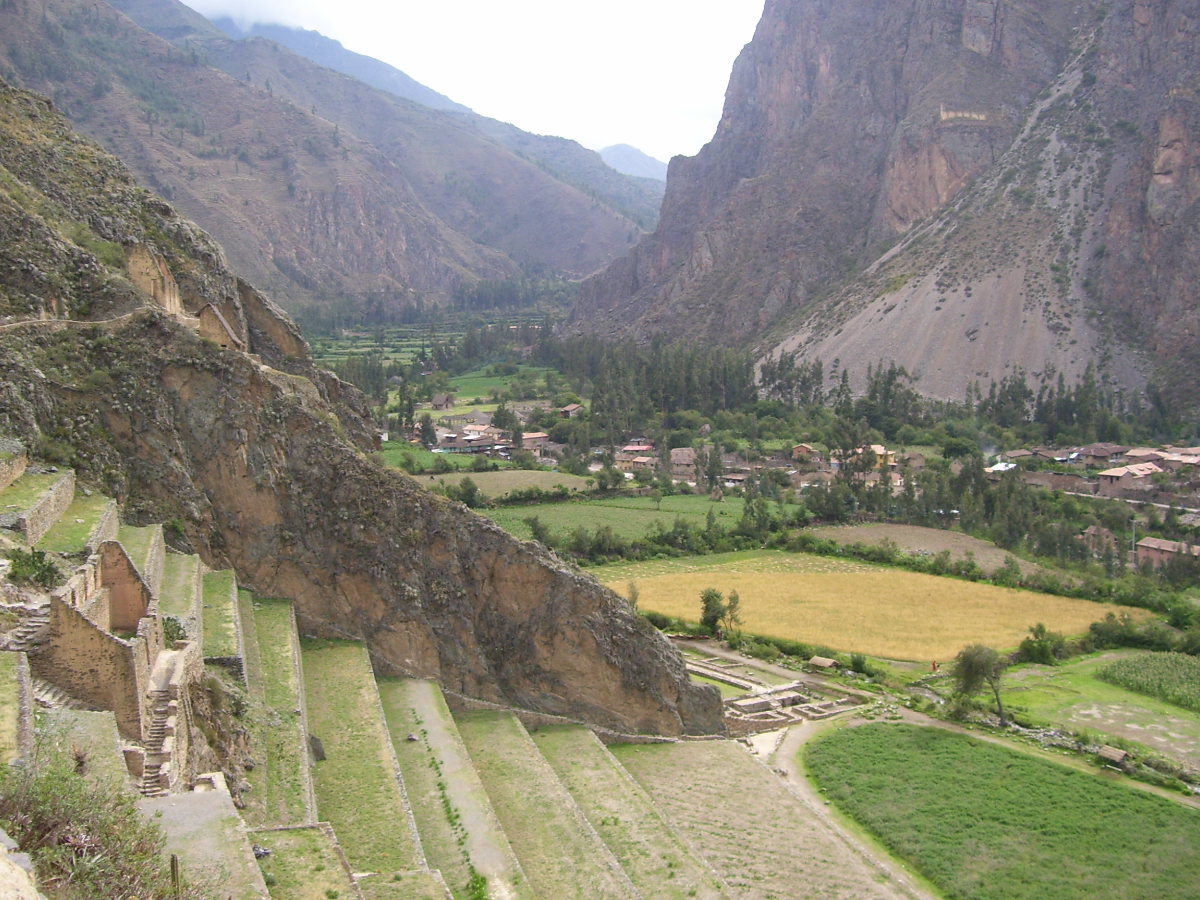
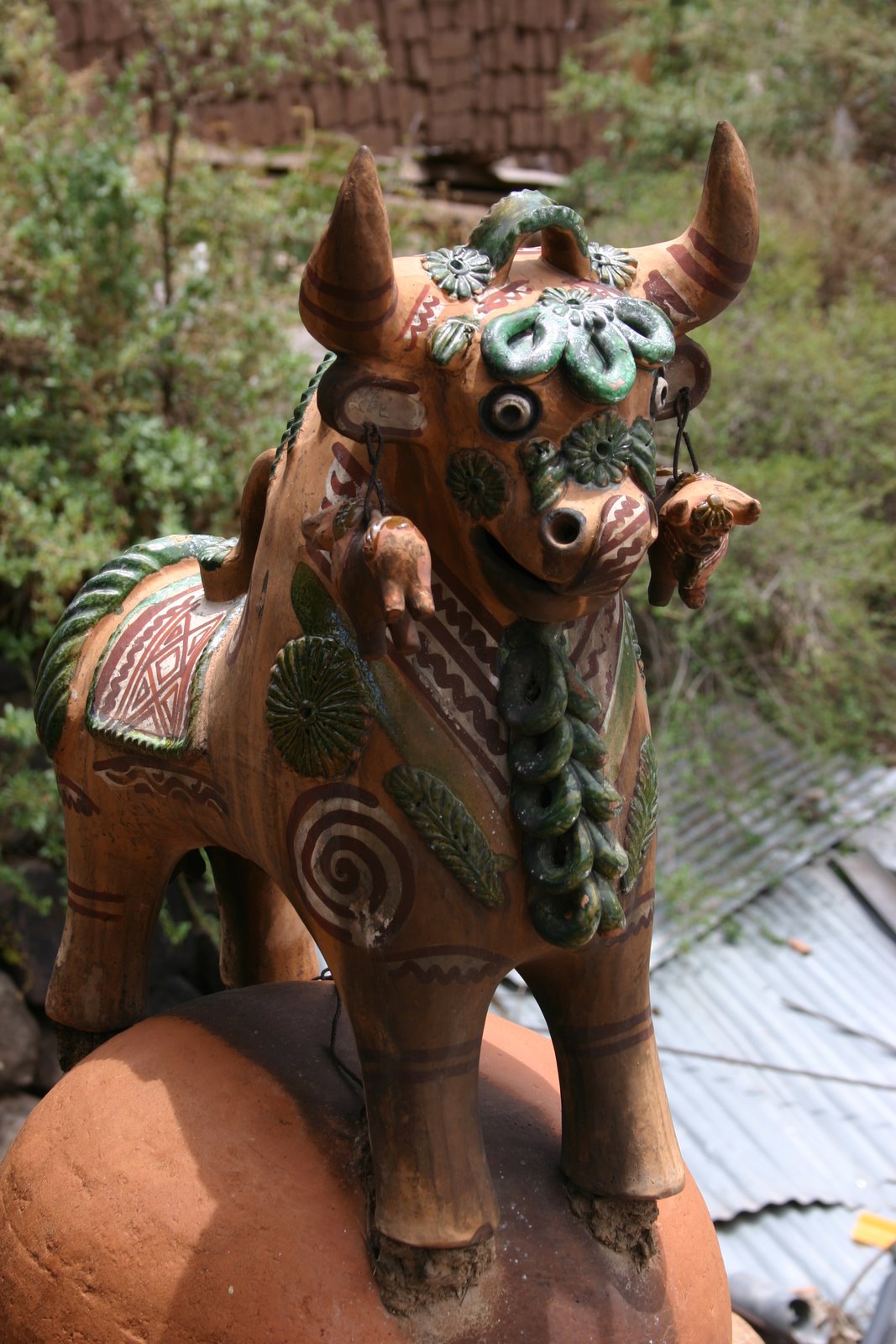 Ollantaytambo was particularly crowded when we first arrived because of the Sunday market in nearby Pisaq. It’s one of the biggest in the Sacred Valley, and it draws crowds from Cuzco on tour buses. Many people then continue onto Ollantaytambo in the afternoon. Many of the stalls in the Pisaq market now cater to tourists, selling sweaters and gloves and souvenirs. There were also some pretty amazing things sold there. We bought a statue with ceramic bulls, similar to those seen on the roof of virtually every home in the Sacred Valley. There’s a picture on one to the left. We were told it’s a good luck charm.
Ollantaytambo was particularly crowded when we first arrived because of the Sunday market in nearby Pisaq. It’s one of the biggest in the Sacred Valley, and it draws crowds from Cuzco on tour buses. Many people then continue onto Ollantaytambo in the afternoon. Many of the stalls in the Pisaq market now cater to tourists, selling sweaters and gloves and souvenirs. There were also some pretty amazing things sold there. We bought a statue with ceramic bulls, similar to those seen on the roof of virtually every home in the Sacred Valley. There’s a picture on one to the left. We were told it’s a good luck charm.
Something caught our eye at the stand shown below. It was a brass door knocker made to look like a hand. We’d seen similar things,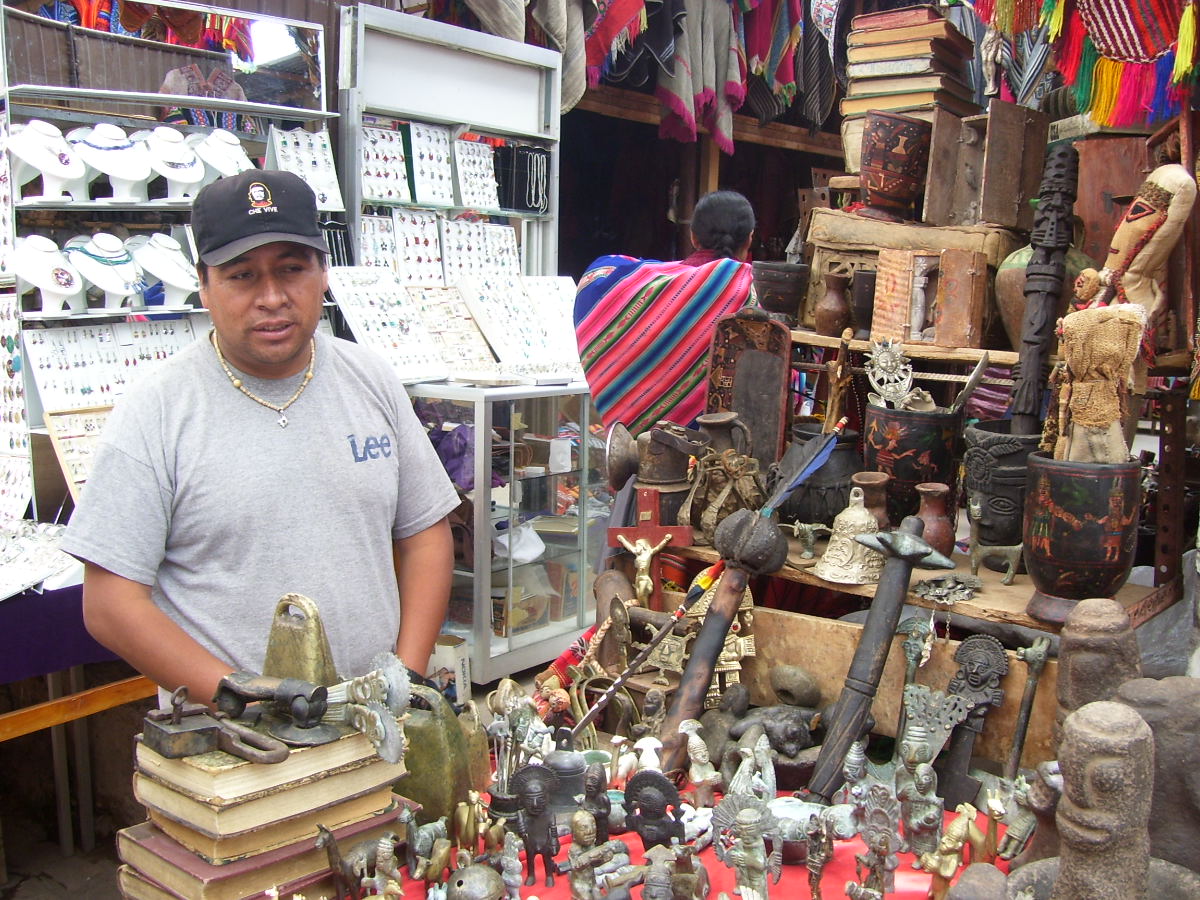 sold as the hand of Fatima, in Morocco. We still regretted passing up a particularly nice one in Marrakesh, for which the seller wanted about $50. The merchant in Pisaq told us that these hand door knockers were rare, only seen in the traditional homes in Cuzco. We only saw one of door knocker like this on our trip, in a little antique store in Arequipa. The woman working there told us much the same story about the one in her shop, how these door knockers appeared only in old colonial homes. I’d like to think that this is a case of a tradition having moved to Spain with the Moors and then across the Atlantic.
sold as the hand of Fatima, in Morocco. We still regretted passing up a particularly nice one in Marrakesh, for which the seller wanted about $50. The merchant in Pisaq told us that these hand door knockers were rare, only seen in the traditional homes in Cuzco. We only saw one of door knocker like this on our trip, in a little antique store in Arequipa. The woman working there told us much the same story about the one in her shop, how these door knockers appeared only in old colonial homes. I’d like to think that this is a case of a tradition having moved to Spain with the Moors and then across the Atlantic.
We’d stayed over in Pisaq on Saturday night, getting some time to explore the ruins 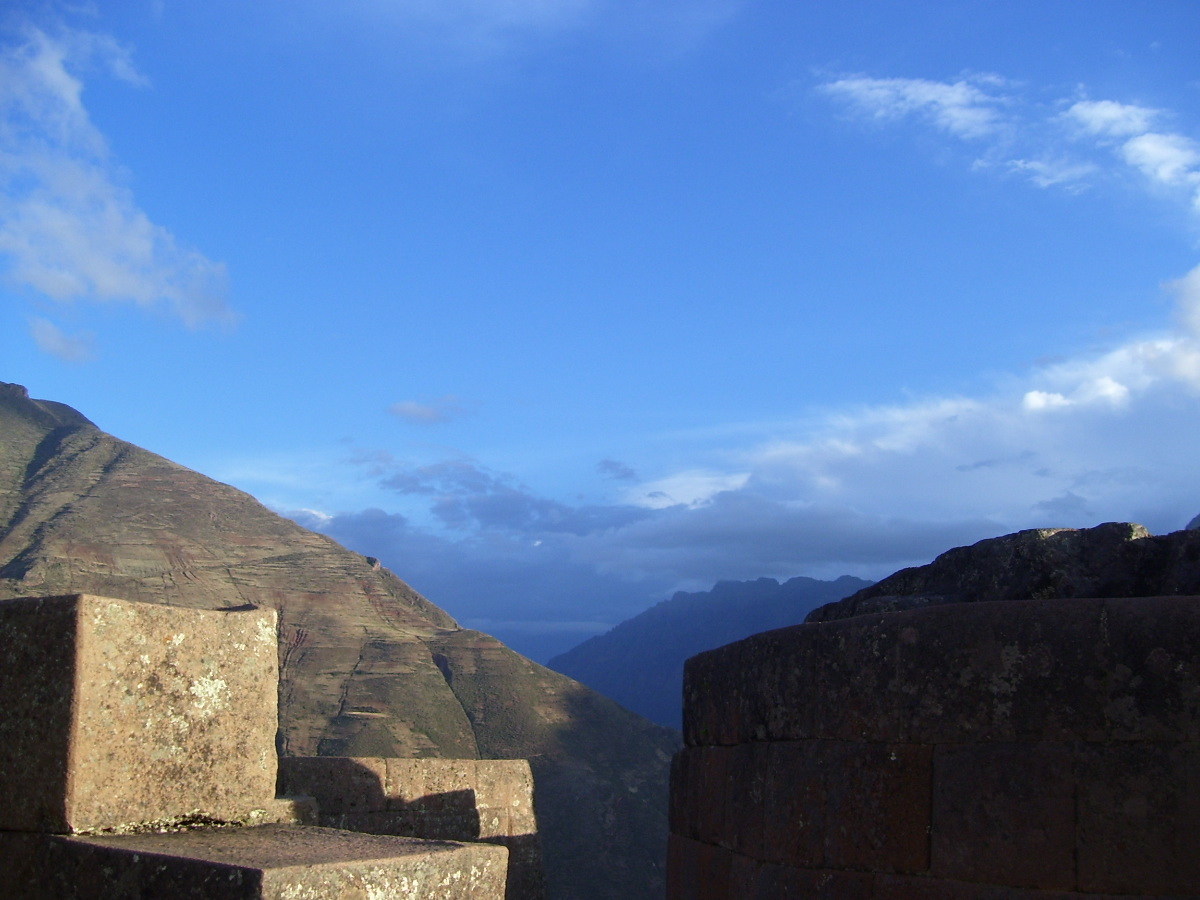 there,
there, 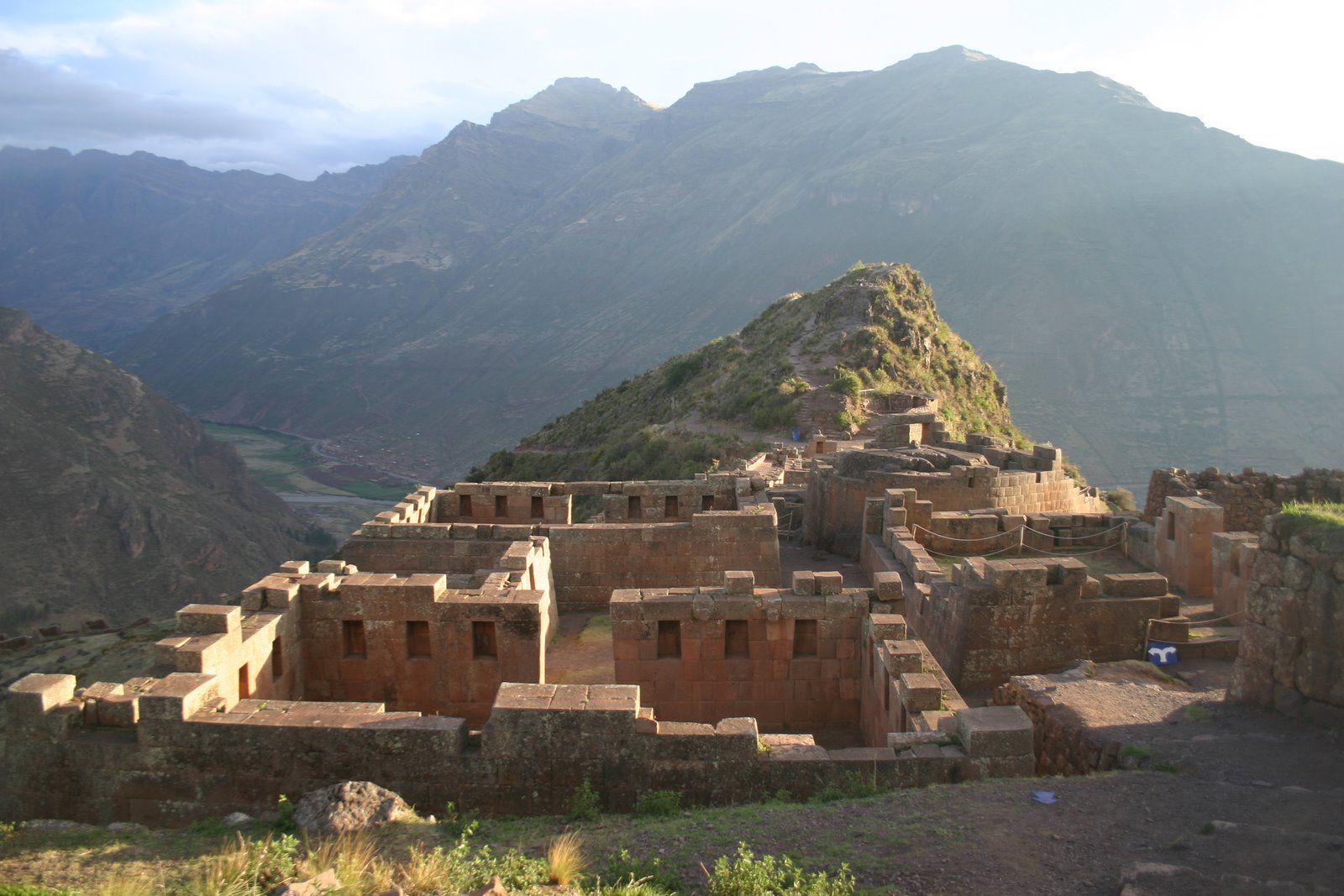 shown in the pictures that follow
shown in the pictures that follow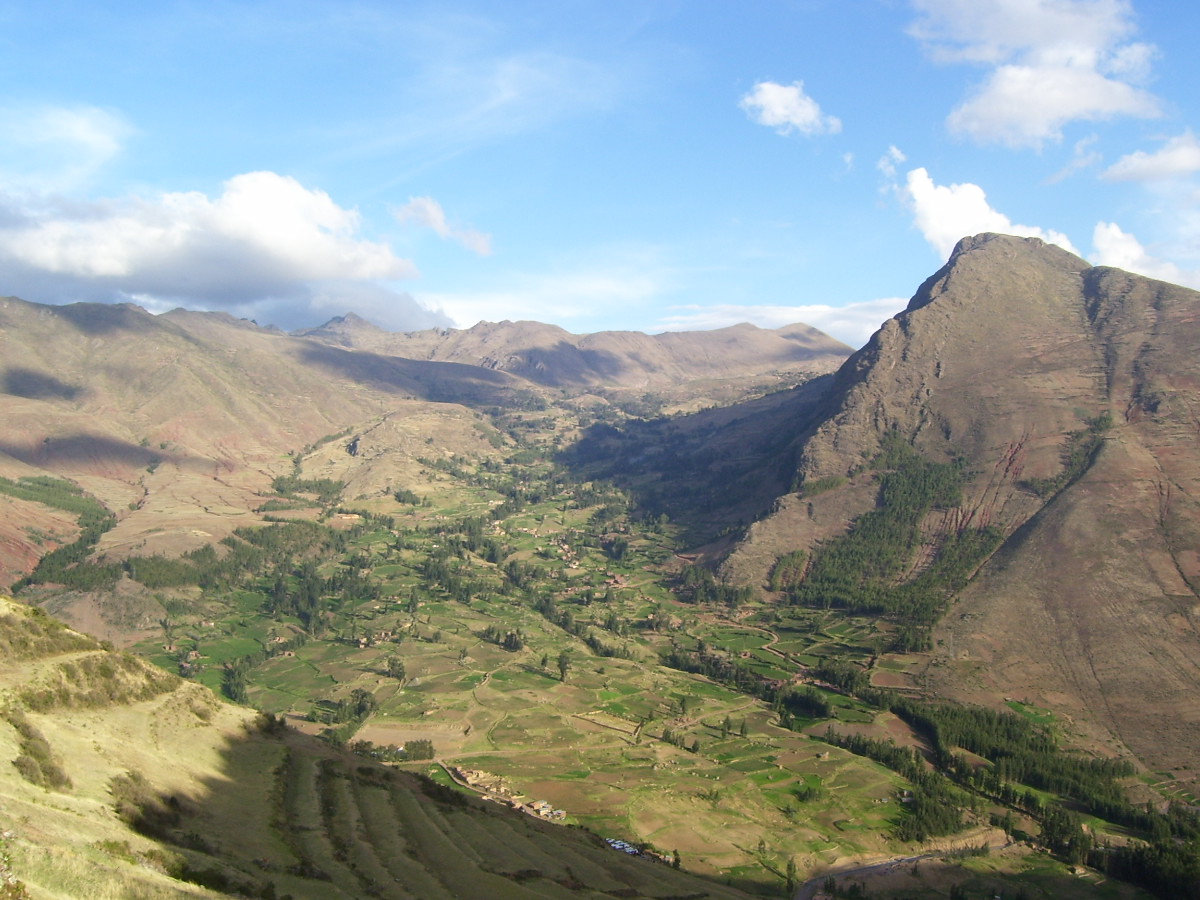 I thought they were among the best I have seen anywhere. Most of the visitors that day were Peruvian day trippers. We wound up catching a ride back to Pisaq from the ruins on a bus carrying an elementary school class from Cuzco back to their home. It was a lot of fun to answer questions from two very bright boys about the U.S. as the bus wound down the curving mountain road.
I thought they were among the best I have seen anywhere. Most of the visitors that day were Peruvian day trippers. We wound up catching a ride back to Pisaq from the ruins on a bus carrying an elementary school class from Cuzco back to their home. It was a lot of fun to answer questions from two very bright boys about the U.S. as the bus wound down the curving mountain road.
